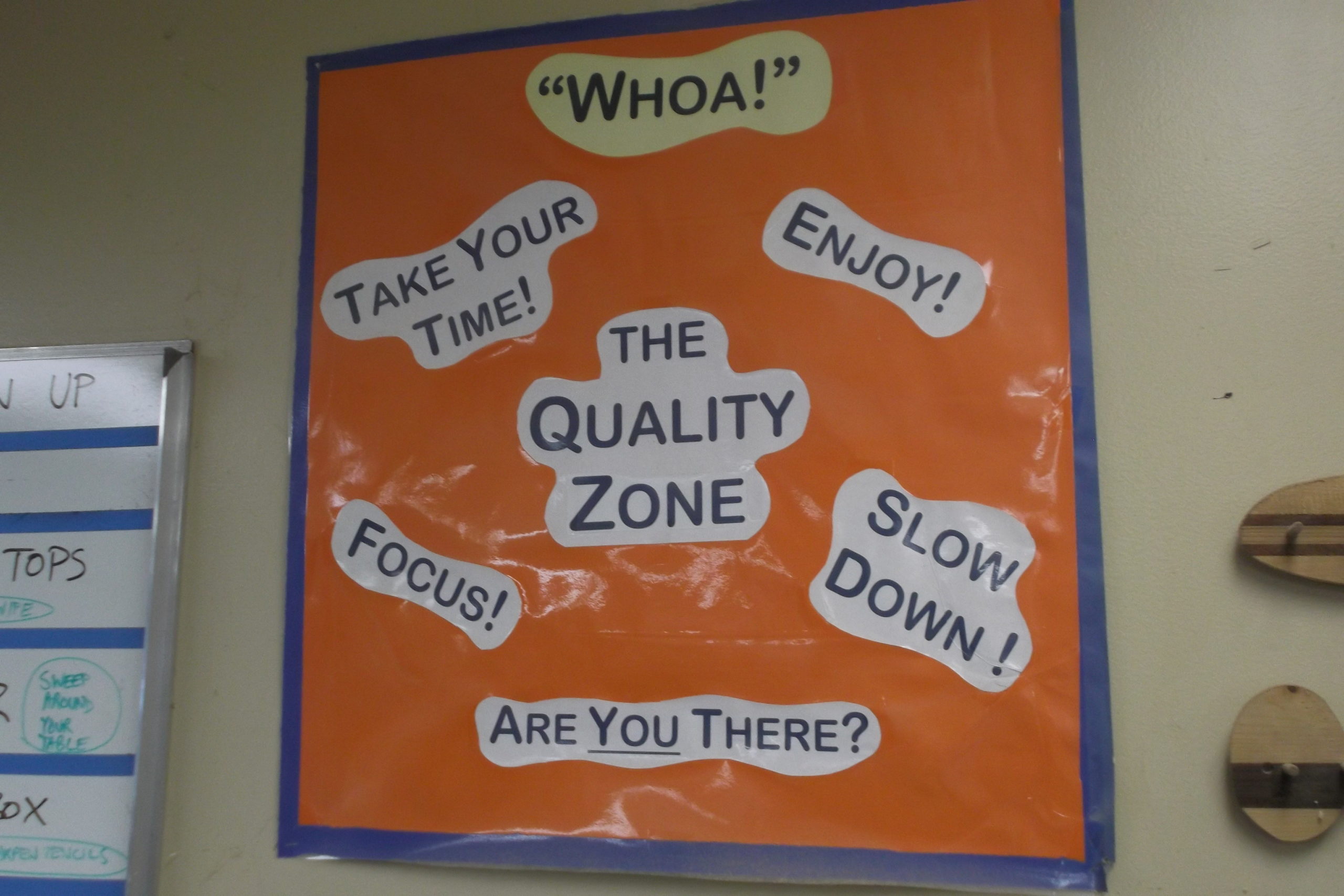Dave Brodkey teaches shop class to sixth to eighth graders at New Brighton Middle School near Santa Cruz, CA. Eleven and twelve year olds are typically not known for their sustained attention at school so when Brodkey told me his students consistently get into a state of flow — or what he calls the “quality zone” — in his classes, I had to learn more.
Indeed, it turns out he’s intuitively and brilliantly incorporated all the key components that encourage flow states.

Create a feedback loop. It’s hard to stay focused when you have no idea how well you are (or aren’t) doing. So Brodkey gives each student a simple tool — a paper-based checklist of 10 or so items — for tracking their progress on a project. Each student has to get a sign-off from Brodkey before they can move to the next step.
And instead of being a rote part of the process, an obstacle to moving forward, Brodkey says the satisfaction of getting each item checked is so powerful that even when he’s given a verbal okay to a student to move ahead, they’ll come back later to have him mark their handout.
[Your team may not need you to provide a detailed list of tasks but don’t underestimate the motivational power of reinforcing their incremental accomplishments.]
Embrace the tedium. We often think of flow as this blissful state of clarity and peaceful immersion in what we’re doing. But to get there takes perseverance and effort — there are actually four phases to flow and the first is the “struggle.”
First, Brodkey (who, as an avid surfer, knows how flow works) sets the kids up for active learning: “There may be congestion while you’re waiting in line,” he tells them. “So while you’re waiting, watch how I’m changing the blade on the saw.” Then he shows the kids how to fully engage their senses by having them run their fingers across the length of the wood to check for rough spots, or telling them: “It’s just you and the sandpaper.”
[Learning how to “be one with the sandpaper” (or the Excel spreadsheet, list of cold-call prospects, programming bugs) is a seriously valuable skill to have, as demonstrated by an inordinate number of CEOs who rose from lowly beginnings.]
Calibrate challenge and ability. Finding that sweet spot, where the challenge is a stretch but not overwhelming, opens the door to flow. And Brodkey knows how far to push each student, calibrating the challenge both for those who are having a tough time and those who have more natural ability, creating a sliding scale of “good enough” — “better” — “wow.” Posters around the room reinforce the a growth mindset with messages like: “Mistakes are just part of life. What you learn from them is up to you.” and “Give your best effort.”

Regardless of their ability, he empowers them with a sense of ownership and responsibility: “Most people,” he’ll tell the class, “say it’s crazy to let 12 year olds use bandsaws and tools but I know I can trust you.”
Reinforce the experience. If Brodkey himself were disengaged, none of this would be happening: Focus is contagious. And directing his attention to addressing the different needs of 28 kids, gets him in the flow. To counter the human tendency to overlook the positive and focus on the negative, he pumps up enthusiasm at the beginning of class with a simple question: ‘How many of you are really excited about your project?’ And afterwards, he has them fill out a “reflection” paper. One student’s response to the question, Did you ever get into “the quality zone” on this project?: “YES!! I trip out on the lathe so hard and it’s just so fun!”
If you want your team to be doing more productive “tripping out,” contact me and let’s explore.
